Supporting Community Solidarity Mechanisms is key for ODF Sustainability
By Kamal Kar
It was indeed a great pleasure to attend and participate in a conference co-hosted by CLTS Knowledge Hub at IDS and UNICEF, held at Tagatay. This enlightening conference was followed by a National workshop entitled, ‘Accelerating Sustainable Zero Open Defecation Programming: Supporting the Poorest and Most Vulnerable’ in Manila. It was an enriching experience to meet and interact with CLTS champions from the Philippines and other South East Asian countries.
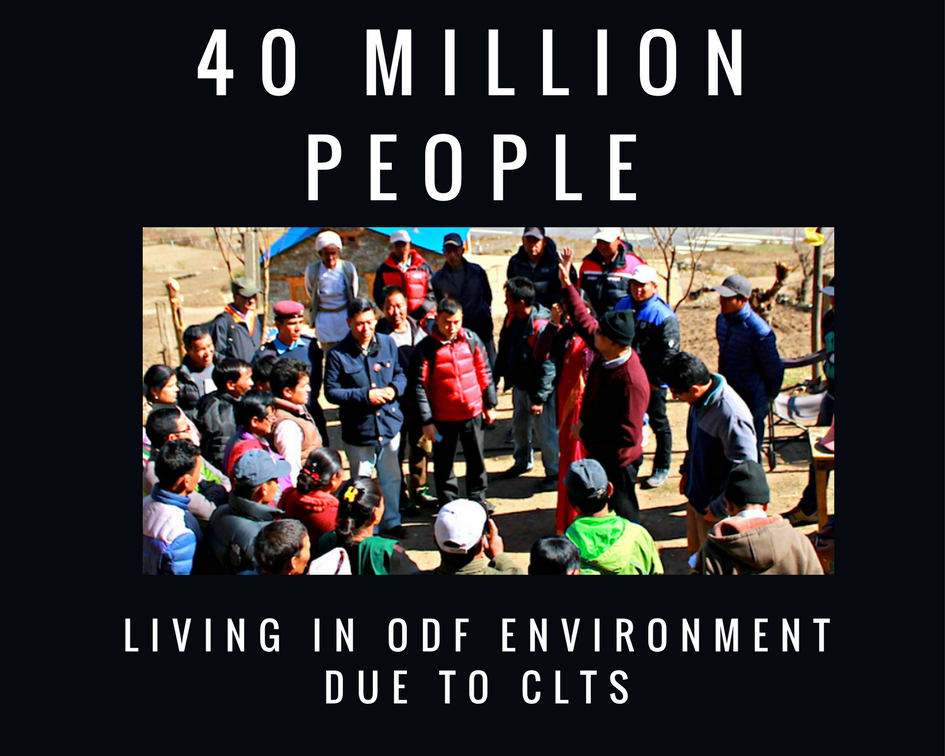 At the outset, I was rather intrigued by the name of the first workshop, ‘Supporting the Poorest and Most Vulnerable Workshop’ and wondered who was going to provide support to the excluded poor and vulnerable. As I continued my train of thought, I assumed that the workshop would deal with the question of those families/households who had returned to the practise of Open Defecation, post achievement of the ODF status by the community.
At the outset, I was rather intrigued by the name of the first workshop, ‘Supporting the Poorest and Most Vulnerable Workshop’ and wondered who was going to provide support to the excluded poor and vulnerable. As I continued my train of thought, I assumed that the workshop would deal with the question of those families/households who had returned to the practise of Open Defecation, post achievement of the ODF status by the community.
As a participant of the two notable events mentioned above, I thought of documenting my initial thoughts and reflections. The major discussions of the workshop revolved around the element of financial inability of the poorest families to continue good sanitation behaviour and improve their toilets to make them more durable and finally, sustain the behaviour change aimed at ending Open Defecation, once achieved.
Also Read: Philippines aims to become Open Defecation Free by 2022 | Manila Conference
The participants at the Tagatay workshop included program managers, CLTS consultants and academics. Though the workshop witnessed the presence of some practitioners, I was a bit disappointed to note that the Natural Leaders and Community Consultants who had emerged from the different ODF villages and had ascended to become significant figures in the civil society and held important positions in the respective local governments, were absent from the workshop. Personally, I am of the opinion that these individuals who are spread in countries where CLTS has been introduced and implemented across the world, are the real storehouse of knowledge and can shed a distinct light on the various reasons and circumstances which compel the poorest families to return to the practice of Open Defecation, even after they had stopped this age old habit and changed their hygiene behaviour. They also could inform all about the diversified efforts taken by the communities in order to arrest such slippage for the maintenance of ODF status.
ODF Sustainability and Global Experience: Bangladesh, Madagascar, Nepal
Global experience has demonstrated that it is rather difficult and rare for families to revert to the practice of Open Defecation, after changing and sustaining their hygiene behaviour practice for a period of 6 months or more. Inspirational examples have emerged from poor countries like Bangladesh, Madagascar and Nepal among others, where ODF communities regularly reconstruct their toilets after the conclusion of periodic environmental disasters like cyclones, flooding, heavy rains, etc. which results in significant loss and destruction of existing sanitation facilities.
In 2004, a BBC documentary entitled ‘Clean Living Part I’ captured the sanitation innovations made by extremely poor communities in Haor region in Bajitpur district of Bangladesh. These low lying areas are spread across six districts and mainly comprise of rural population. Inundation and water logging is a regular phenomenon in these regions and it occurs almost annually for a period of 6 months. The documentary explained how the poor communities living in these regions of Bangladesh have made necessary and novel sanitation provisions.
In the year 2003, a field team from CARE, Bangladesh and I introduced CLTS in the first village of Bajitpur district and in a short span of two years, all the villages of the Haor region became ODF. Till date, I have never witnessed the spread of CLTS at such a stimulating speed, in any other part of the world.
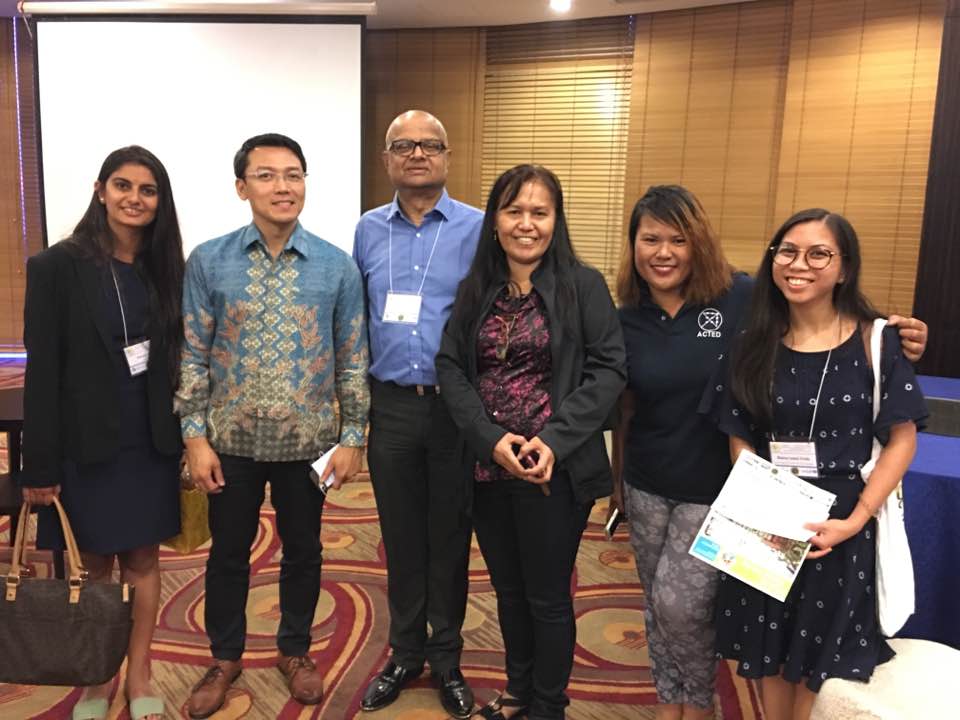 After understanding the implications of living in unsanitary conditions, the communities soon innovated and introduced localised solutions to tackle the sanitation concerns. The Haor region is a single cropped area and the poverty and prosperity of the communities principally depends on the onset of inundation of these low lying areas. The members of these communities create and use temporary housing and toilet structures at the low level plain for 6 months during the dry season. On the other hand, the communities have constructed proper houses and permanent toilets with better superstructure using CGI seats and bricks, well placed squatting plates, soak pit tanks, on a higher plain known as ‘anti’.
After understanding the implications of living in unsanitary conditions, the communities soon innovated and introduced localised solutions to tackle the sanitation concerns. The Haor region is a single cropped area and the poverty and prosperity of the communities principally depends on the onset of inundation of these low lying areas. The members of these communities create and use temporary housing and toilet structures at the low level plain for 6 months during the dry season. On the other hand, the communities have constructed proper houses and permanent toilets with better superstructure using CGI seats and bricks, well placed squatting plates, soak pit tanks, on a higher plain known as ‘anti’.
These toilets are utilised only during the wet season when all of these families temporarily migrate to the higher ground ‘antis’ and the toilets below are destroyed due to inundation. After 6 months, when the lowland dries up, the community consultants with the help of the community build new low cost, temporary toilets for the next wet season. The central idea remains minimizing the use of highland toilets by using the lowland temporary toilets during the dry season to maximize its use during the wet season. This seasonal usage tendency allows the upland toilet pits to dry up during the dry season and enriches the soil with nutrients through conversion and assimilation of the excreta at the lower areas into mud, silt, clay during the 6 month wet season. Similar strategy is used by millions of families along the ‘chaurs’ and coastal and saline riverside areas of Bangladesh in districts of Barishal, Pabna, Faridpur, Noakhali, Lal Munir Hath and Tangail as they face the same phenomenon of inundation and land erosion, periodically almost every year. Though their sanitation approach may be perceived as temporary and unlike the usual toilet construction notion, it successfully manages to disconnect oral and faecal contamination and provide multiple health benefits to all in the community. After vast areas of Bangladesh became ODF, many of these communities continued to engage with the local government and other support agencies in order to evolve innovative ways for management of feacal sludge.
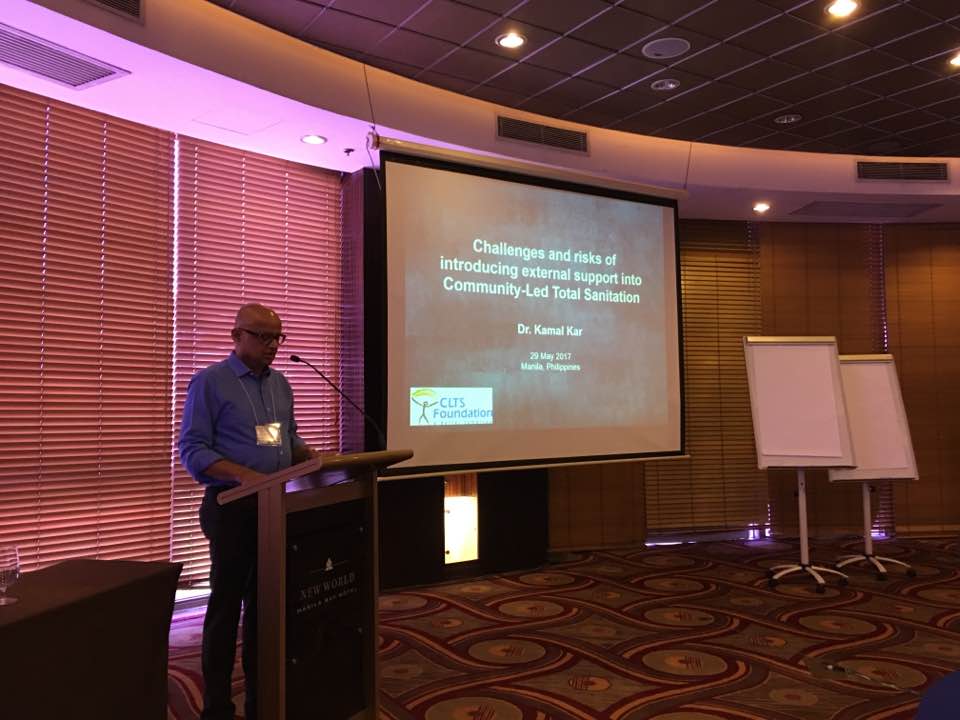 Another poignant example of poor communities handling sanitation crisis was witnessed after the devastating earthquake in Nepal in the districts of Sindhupal Chawk and Dolakha where thousands of rural households in these areas suffered the loss of their houses, including the constructed toilets. It was heartening to note that as soon as the debris was removed and normalcy started creeping into the lives of the people, the families of the ODF communities constructed their toilets first, before addressing other issues related to construction of civil structure. This provided a clear indication that when behaviour change is deeply ingrained and becomes a common practise; no one tends to revert to the practise of Open Defecation.
Another poignant example of poor communities handling sanitation crisis was witnessed after the devastating earthquake in Nepal in the districts of Sindhupal Chawk and Dolakha where thousands of rural households in these areas suffered the loss of their houses, including the constructed toilets. It was heartening to note that as soon as the debris was removed and normalcy started creeping into the lives of the people, the families of the ODF communities constructed their toilets first, before addressing other issues related to construction of civil structure. This provided a clear indication that when behaviour change is deeply ingrained and becomes a common practise; no one tends to revert to the practise of Open Defecation.
This realization brings forth a question regarding the quality of CLTS triggering, post triggering follow-up and post ODF support, rendered to a community. Moreover, the enabling environment in which CLTS is introduced becomes a crucial determinant of behaviour change sustenance. For instance, if information about the element of externally designed support to the poorest is in some way divulged to the community at the introductory stage of CLTS, it would be impossible to create community dynamics which will embrace all members and strive towards achieving ODF status. The usual tendency of families trying to prove themselves eligible for external dole on the basis of low economic status becomes a hindering factor in community-led movements. Creating and maintaining community social solidarity can easily resolve such challenges.
One of the infamous examples of alluring the community towards a substantial reward upon achievement of the ODF status is the Nirmal Gram Puraskar program, launched by Government of India. A colossal number of villages and blocks falsely declared themselves ODF with the intention of acquiring the prize money. Soon, the false declarations and pseudo-ODF achievements were exposed and the government was compelled to abandon the program.
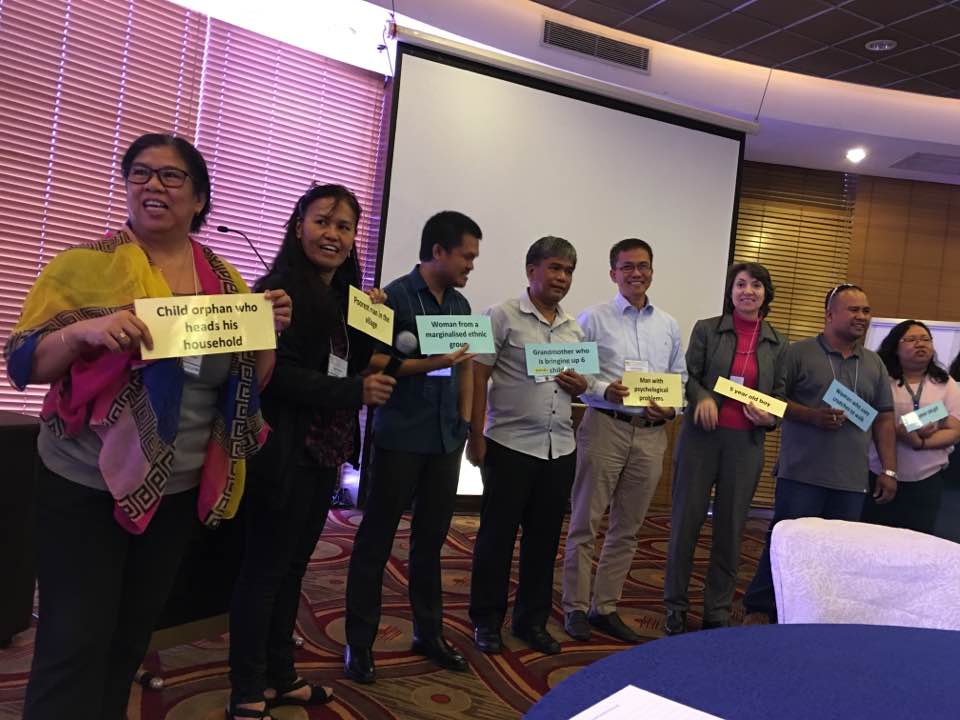 Though, it is possible for a small percentage of an ODF community to slip back into the practice of Open Defecation due to loss of their low-cost sanitation structures which were initially made from locally available, inexpensive materials or owing to the inability of the poorest family members to move along the sanitation ladder by constructing more durable toilets as carried out by others in the community, experience has shown otherwise. Evidence has demonstrated that it is quite organic and rational for the communities to maintain their ODF status for a period of minimum 1-2 years, after the achievement and declaration.
Though, it is possible for a small percentage of an ODF community to slip back into the practice of Open Defecation due to loss of their low-cost sanitation structures which were initially made from locally available, inexpensive materials or owing to the inability of the poorest family members to move along the sanitation ladder by constructing more durable toilets as carried out by others in the community, experience has shown otherwise. Evidence has demonstrated that it is quite organic and rational for the communities to maintain their ODF status for a period of minimum 1-2 years, after the achievement and declaration.
It is really difficult to imagine that any human being, be it poor, rich, educated, not-so-educated, irrespective of their class, caste, creed or livelihood pattern would accept to go back to the unhygienic and filthy habit of Open Defecation, after achieving ODF status. This refusal to live in an unhealthy environment becomes the cornerstone of behaviour change and the basis for sustained ODF status.
Please refer to the following diagrams which explain the distinction between the phenomenon of interactive participation and self mobilization which is generated through CLTS triggering and sustained through post ODF follow-up on one hand, while on the other, shallow understanding and incomplete CLTS triggering which is often reflected in participation aimed at gaining material incentives or functional participation.
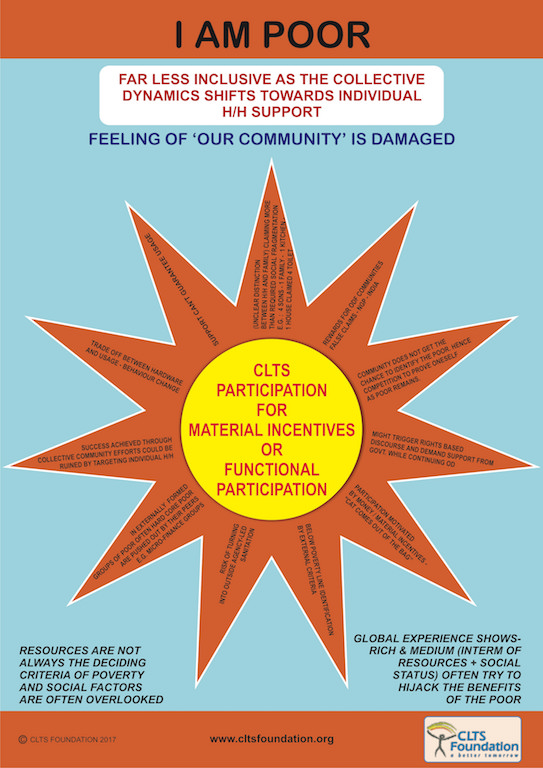
Creative designed by CLTS Foundation
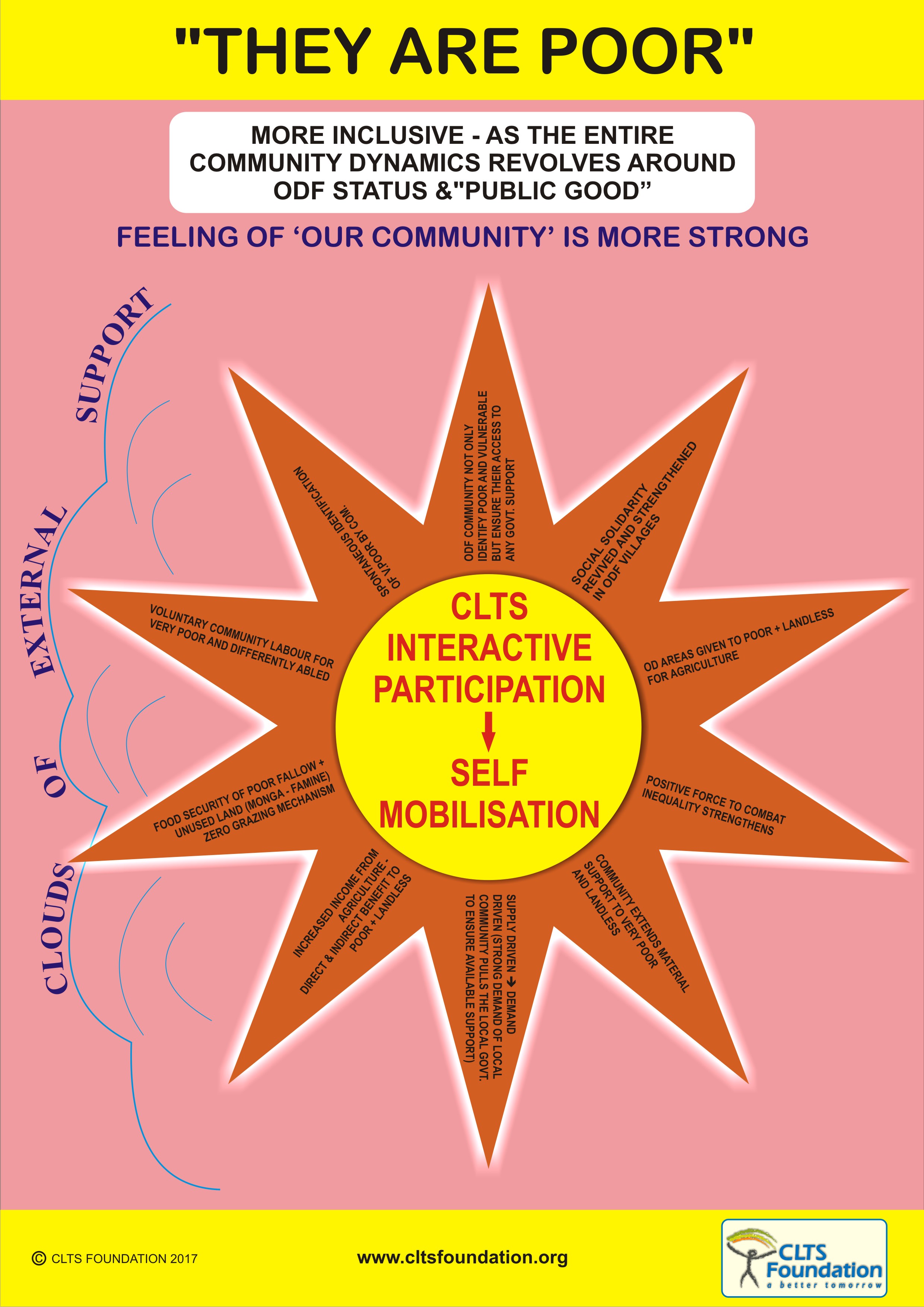 Through global experiences, the notion that sustainability cannot be achieved unless behaviour change is preserved and practised for a certain period of time has become sacrosanct. An attempt at bypassing the community’s own social solidarity mechanisms or denying the involvement of the local formal and informal actors who were instrumental in achieving ODF status could be detrimental to the community led process. Therefore, targeting of the poorest of the poor and extending externally recognized support to this section of the community for toilet construction might damage the confidence of the community and push them back to external dependence again. The sporadic attempts at wanting to identify the poorest and the most vulnerable through an outsider’s perspective to provide them with externally planned resources in the plea of “leaving no one behind” would severely damage the organically grown social solidarity mechanism and community empowerment process of CLTS.
Through global experiences, the notion that sustainability cannot be achieved unless behaviour change is preserved and practised for a certain period of time has become sacrosanct. An attempt at bypassing the community’s own social solidarity mechanisms or denying the involvement of the local formal and informal actors who were instrumental in achieving ODF status could be detrimental to the community led process. Therefore, targeting of the poorest of the poor and extending externally recognized support to this section of the community for toilet construction might damage the confidence of the community and push them back to external dependence again. The sporadic attempts at wanting to identify the poorest and the most vulnerable through an outsider’s perspective to provide them with externally planned resources in the plea of “leaving no one behind” would severely damage the organically grown social solidarity mechanism and community empowerment process of CLTS.
Check out CLTS Foundation’s You Tube channel at this link. https://www.youtube.com/channel/UCZBczl2AIevTqfZWbKTi0Fg
The author is pioneer of community led total sanitation and recipient of Sarphati Lifetime Achievement Award in Sanitation 2015. He is the founder chairman of CLTS Foundation.

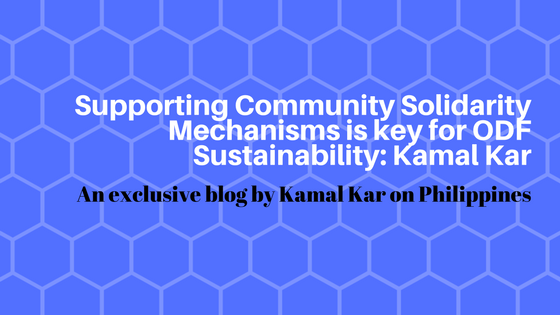
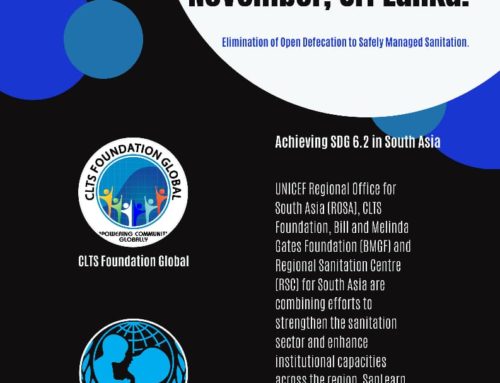
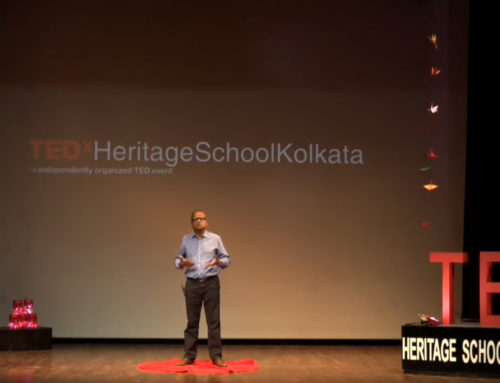
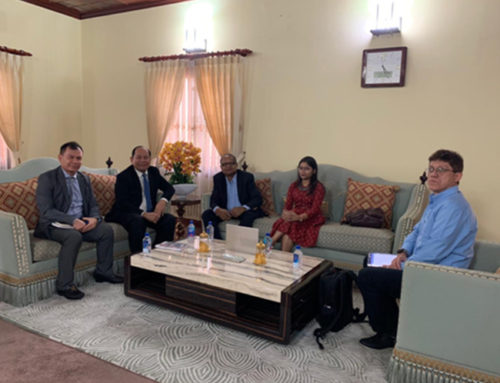
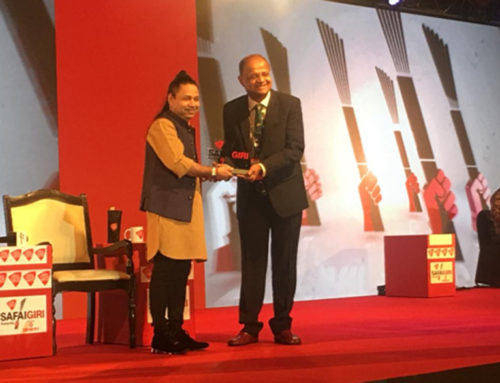

Leave A Comment